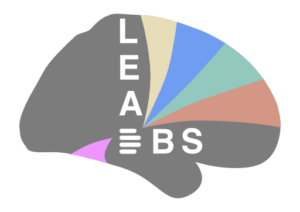-
AuthorPosts
-
06/24/2014 at 3:54 PM #60
andreashorn
KeymasterPlease post potential feature-requests here.
01/01/2016 at 12:40 AM #722remipatriat
ParticipantHello,
Thank you for sharing this very impressive toolbox! I also appreciate the clarity of the design and how simple it is to use. While I understand why the normalization to MNI space is crucial (so we can use the template), I wonder if there is a way to make it work in subject space. For example, we acquire many preop scans (high resolution) that enable us to do manual segmentation of the the STN, SN, RN, GPi, GPe, Thalamus… quite robustly. We coregister these scan to a common scan (say the T1) so we can visualize everything using subject-defined segmentation. Via the toolbox we can easily register the postop data to the T1 and we can also probably extract the electrodes from the postop CT. However, the visualization is currently not possible. Would it be possible to add an option for which we could import a nifti file containing our manual segmentation that can then be visualized with the toolbox?
Best regards,
01/01/2016 at 11:19 PM #724andreashorn
KeymasterDear Remi,
thanks for your kind words. We have thought about implementing a “native space” mode already and I guess it will be done at some point – at the moment, there are things with higher priority on the list, however. Of course, if you/someone from your lab is interested in implementing something similar, please feel free to fork us on github.
Still, there are some rather manual options:
1. transposing the coordinates from the reconstructions into native space is fairly easy – you can e.g. use SPM and the y_ea_inv_normparams.nii file to warp all coordinates that you find in the ea_reconstruction.mat file in the patient’s folder into native space. You can then add a patient specific anatomy file in the 3D viewer’s small “Anatomy Slices” window (Choose a .nii file manually in the Dropdown menu that is by default set to “MNI-Template”). Finally, you can add your manually segmented anatomy by either
a. adding the segmented files to a folder in lead_dbs/atlases/youratlasname -> put left hemispheric files into a subfolder called “lh” and right-hemispheric ones to a subfolder called “rh”. All .nii files should have the same name for lh and rh files. This new atlas is automatically detected when you restart lead-dbs.
b. you can manually add .nii files to a scene in the 3D-viewer by choosing “open ROI” in the “Add Objects” Menu in the 3D-viewer’s main window.
2. a more simple option would be to warp manually segmented structures into MNI space and add these as an atlas. You would be working in MNI space but using (warped) patient specific anatomy. Probably not as precise but given the great work of ANTs and/or DARTEL probably nearly as precise as the imaging modalities (MRI/CT) themselves..
I hope this helps you somehow!
Best, Andy
-
AuthorPosts
- The forum ‘Support Forum (ARCHIVED – Please use Slack Channel instead)’ is closed to new topics and replies.

